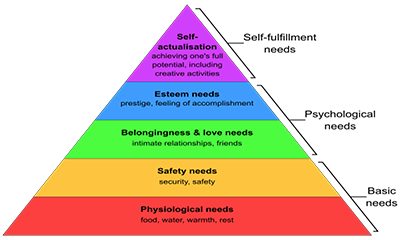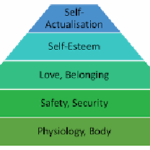Also known as: Theories of motivation, work motivation models
There is no single, universally accepted theory of motivation that fully explains how human behavior is driven and directed in organizational settings. Instead, the term motivation theory refers to a collection of conceptual models and frameworks developed over time—especially during the 1950s to 1970s—to explain how motives and incentives affect workplace behavior.
Motivation-Theoretical Approaches
Rather than being definitive “theories,” most of these models are better understood as motivation-theoretical approaches, each offering different assumptions, terminology, and explanatory focus. These approaches seek to answer how and why people become motivated to act in certain ways, particularly in relation to their performance, engagement, and goal achievement (→ motivation).
Despite their enduring popularity, some early models are now considered outdated:
-
Maslow’s Hierarchy of Needs
-
Herzberg’s Two-Factor Theory
-
Alderfer’s ERG Model
In contrast, other models offer greater predictive and practical value in organizational settings:
-
Expectancy-Valence Models
-
Achievement Motivation Theory
-
Heckhausen’s Motivation Model
-
Rubicon Model of Action Phases
Classification of Motivation Theories
Many textbooks and HR training materials divide these theories into content theories (focused on what motivates) and process theories (focused on how motivation occurs). However, this classification is limited because:
-
Content theories also describe processes (e.g., need satisfaction).
-
Process theories often reference motivational content (e.g., goals, rewards).
-
The theories of achievement motivation don’t fit neatly into either category.
A more useful distinction is between:
-
Humanistic Approaches
Emphasize human needs, satisfaction, and personal growth. Examples include:-
Maslow’s model
-
Alderfer’s ERG theory
-
Herzberg’s motivation-hygiene theory
-
-
Cognitivist Approaches
Focus on individual perception, expectation, and decision-making. Examples include:-
Expectancy-valence theory
-
McClelland’s Achievement Motivation Theory
-
The Rubicon Model and goal-setting theory
-
These cognitive models are often more applicable in performance management, employee development, and incentive system design due to their realistic depiction of decision-making processes.
Practical Implications for HR and Leadership
Understanding motivation theories—particularly the more robust cognitive models—can enhance:
-
Goal-setting and feedback systems
-
Employee engagement strategies
-
Incentive structures
-
Performance evaluations
-
Leadership communication and decision-making
Effective leaders and HR professionals use these insights to tailor motivation strategies to individual and organizational needs.
« Back to Glossary Index





![15 Employee Offboarding Templates That Save Hours of HR Time [Free Downloads] 15 Employee Offboarding Templates That Save Hours of HR Time [Free Downloads]](https://i1.wp.com/www.hrcloud.com/hubfs/Header.png?w=150&resize=150,100&ssl=1)
